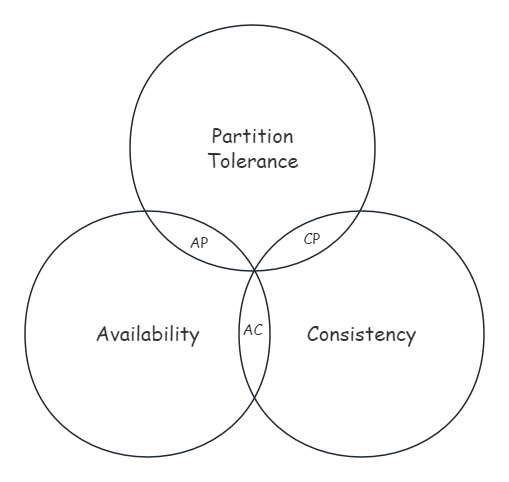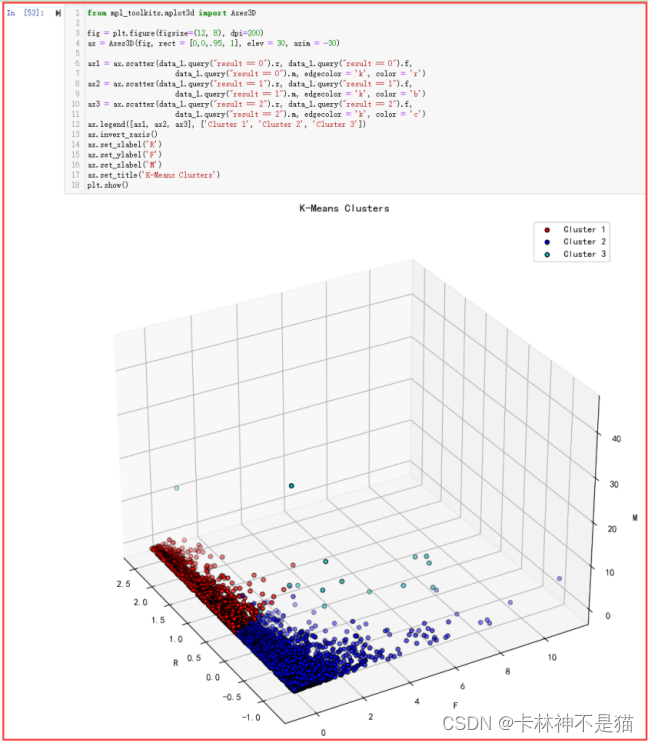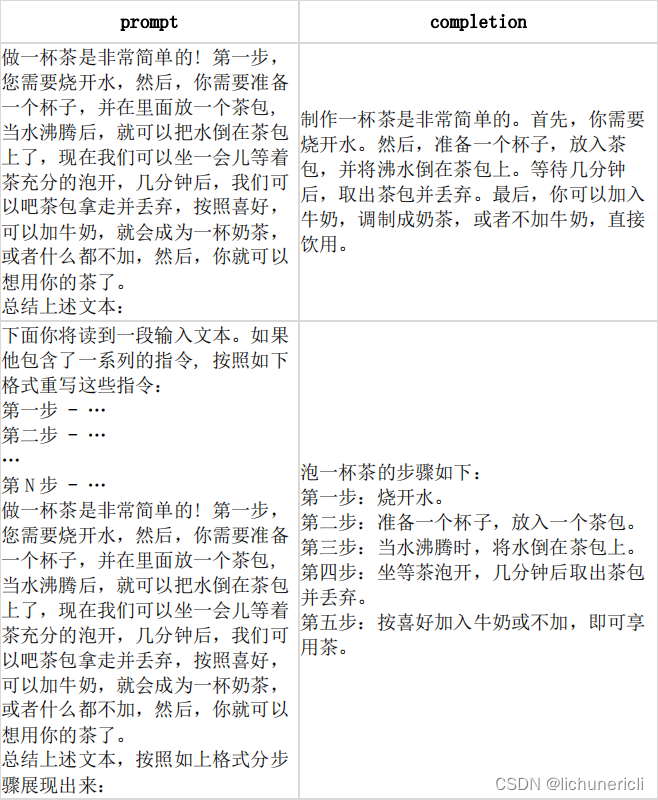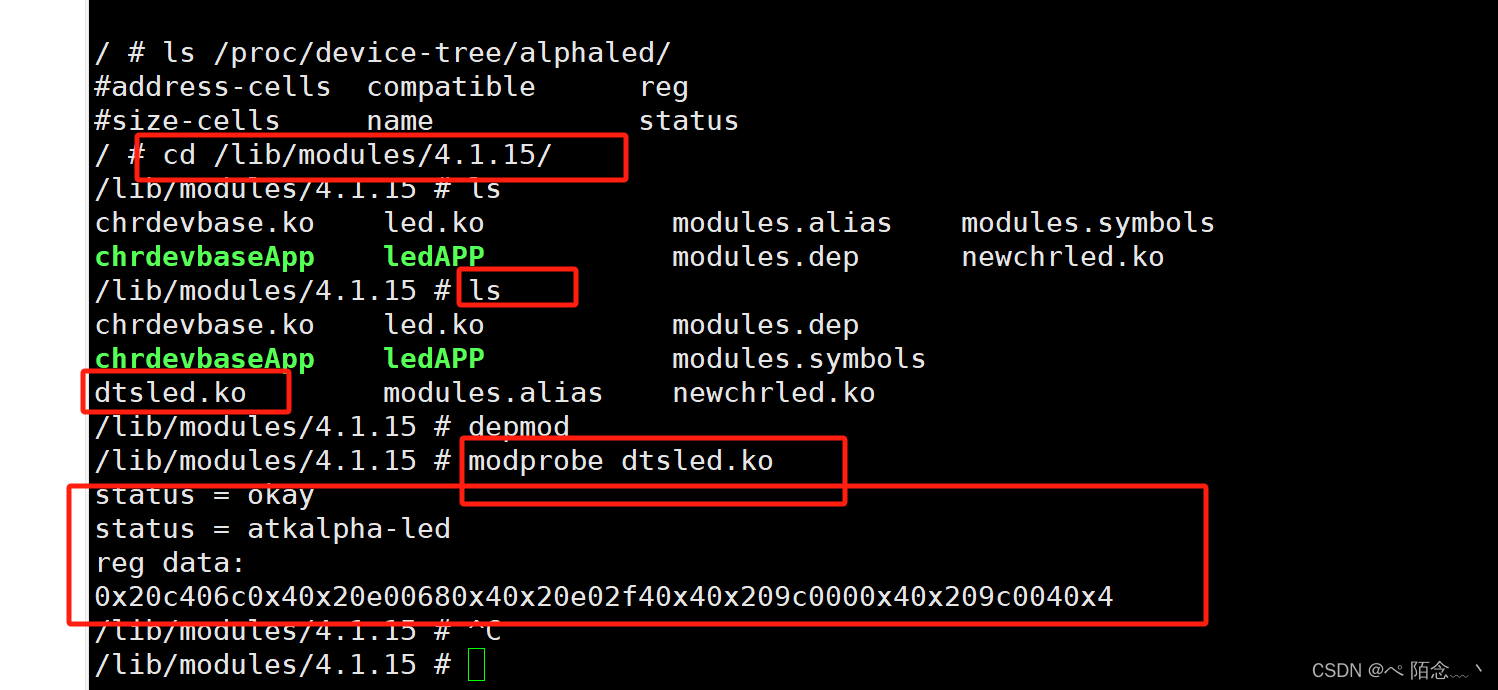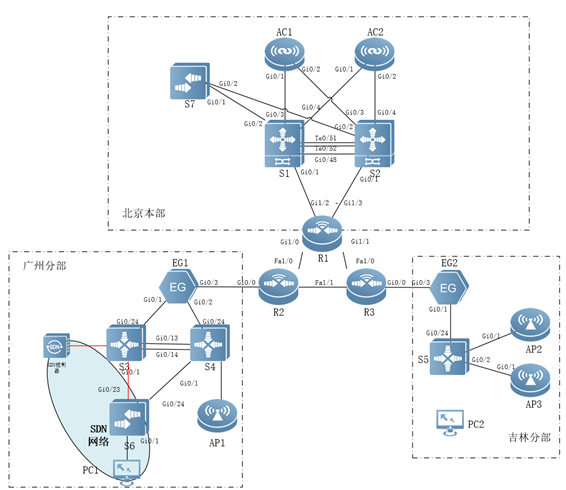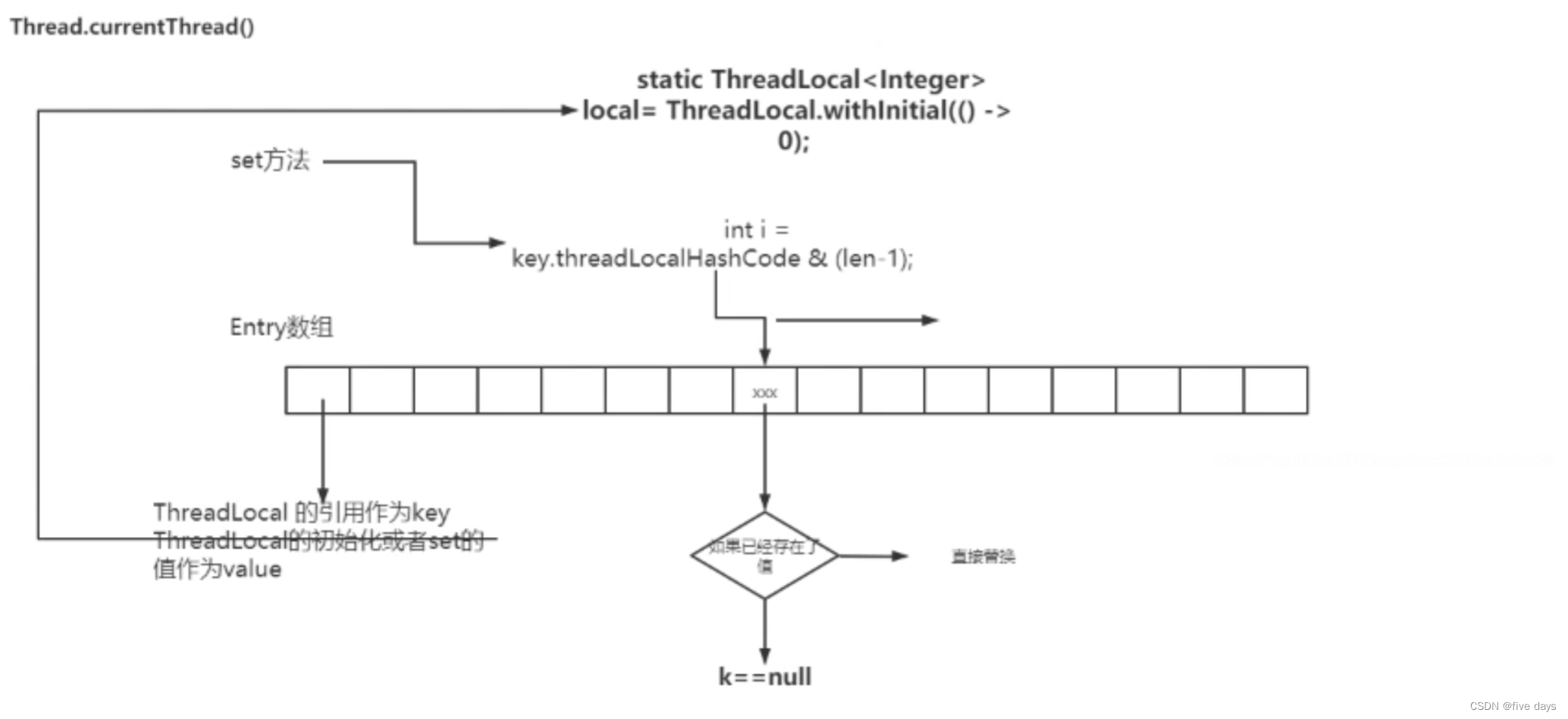0. 引言
操作系统中与匿名页相对的是文件页,文件页的反向映射对比匿名页的反向映射更为简单。如果还不清楚匿名页反向映射逻辑的,请移步 匿名页反向映射
1. 文件页反向映射数据结构
struct file: 用户进程每open()一次文件,则会生成一个file对象,file->f_mapping指向该管理该文件页面对象
struct file {
union {
struct llist_node fu_llist;
struct rcu_head fu_rcuhead;
} f_u;
struct path f_path;
struct inode *f_inode; /* cached value */
const struct file_operations *f_op;
/*
* Protects f_ep_links, f_flags.
* Must not be taken from IRQ context.
*/
spinlock_t f_lock;
enum rw_hint f_write_hint;
atomic_long_t f_count;
unsigned int f_flags;
fmode_t f_mode;
struct mutex f_pos_lock;
loff_t f_pos;
struct fown_struct f_owner;
const struct cred *f_cred;
struct file_ra_state f_ra;
u64 f_version;
#ifdef CONFIG_SECURITY
void *f_security;
#endif
/* needed for tty driver, and maybe others */
void *private_data;
#ifdef CONFIG_EPOLL
/* Used by fs/eventpoll.c to link all the hooks to this file */
struct list_head f_ep_links;
struct list_head f_tfile_llink;
#endif /* #ifdef CONFIG_EPOLL */
struct address_space *f_mapping; // 文件页缓冲区,文件页都放在该对象中进行管理
errseq_t f_wb_err;
errseq_t f_sb_err; /* for syncfs */
} __randomize_layout
__attribute__((aligned(4))); /* lest something weird decides that 2 is OK */
struct address_space: 用来管理一个文件所有内容页面,一个真实的文件只对应一个address_space结构,其中address_space->i_pages是保存页面的结构,address_space->i_mmap是一个红黑树,红黑树上挂载着映射该文件的所有vma对象。
/**
* struct address_space - Contents of a cacheable, mappable object.
* @host: Owner, either the inode or the block_device.
* @i_pages: Cached pages.
* @gfp_mask: Memory allocation flags to use for allocating pages.
* @i_mmap_writable: Number of VM_SHARED mappings.
* @nr_thps: Number of THPs in the pagecache (non-shmem only).
* @i_mmap: Tree of private and shared mappings.
* @i_mmap_rwsem: Protects @i_mmap and @i_mmap_writable.
* @nrpages: Number of page entries, protected by the i_pages lock.
* @nrexceptional: Shadow or DAX entries, protected by the i_pages lock.
* @writeback_index: Writeback starts here.
* @a_ops: Methods.
* @flags: Error bits and flags (AS_*).
* @wb_err: The most recent error which has occurred.
* @private_lock: For use by the owner of the address_space.
* @private_list: For use by the owner of the address_space.
* @private_data: For use by the owner of the address_space.
*/
struct address_space {
struct inode *host;
struct xarray i_pages;
gfp_t gfp_mask;
atomic_t i_mmap_writable;
#ifdef CONFIG_READ_ONLY_THP_FOR_FS
/* number of thp, only for non-shmem files */
atomic_t nr_thps;
#endif
struct rb_root_cached i_mmap;
struct rw_semaphore i_mmap_rwsem;
unsigned long nrpages;
unsigned long nrexceptional;
pgoff_t writeback_index;
const struct address_space_operations *a_ops;
unsigned long flags;
errseq_t wb_err;
spinlock_t private_lock;
struct list_head private_list;
void *private_data;
} __attribute__((aligned(sizeof(long)))) __randomize_layout;
struct vm_area_struct: 用来描述用户进程的一段虚拟地址空间,其中vma->vm_start表示映射的起始虚拟地址,vma->vm_end表示映射的结束虚拟地址,vma->vm_file指向映射的文件对象,vma->vm_pgoff表示从文件哪里进行映射(以页面为单位)。
/*
* This struct describes a virtual memory area. There is one of these
* per VM-area/task. A VM area is any part of the process virtual memory
* space that has a special rule for the page-fault handlers (ie a shared
* library, the executable area etc).
*/
struct vm_area_struct {
/* The first cache line has the info for VMA tree walking. */
unsigned long vm_start; /* Our start address within vm_mm. */ // 映射的起始虚拟地址
unsigned long vm_end; /* The first byte after our end address
within vm_mm. */ // 映射的结束虚拟地址
/* linked list of VM areas per task, sorted by address */
struct vm_area_struct *vm_next, *vm_prev;
struct rb_node vm_rb;
/*
* Largest free memory gap in bytes to the left of this VMA.
* Either between this VMA and vma->vm_prev, or between one of the
* VMAs below us in the VMA rbtree and its ->vm_prev. This helps
* get_unmapped_area find a free area of the right size.
*/
unsigned long rb_subtree_gap;
/* Second cache line starts here. */
struct mm_struct *vm_mm; /* The address space we belong to. */
/*
* Access permissions of this VMA.
* See vmf_insert_mixed_prot() for discussion.
*/
pgprot_t vm_page_prot;
unsigned long vm_flags; /* Flags, see mm.h. */
/*
* For areas with an address space and backing store,
* linkage into the address_space->i_mmap interval tree.
*/
struct {
struct rb_node rb;
unsigned long rb_subtree_last;
} shared;
/*
* A file's MAP_PRIVATE vma can be in both i_mmap tree and anon_vma
* list, after a COW of one of the file pages. A MAP_SHARED vma
* can only be in the i_mmap tree. An anonymous MAP_PRIVATE, stack
* or brk vma (with NULL file) can only be in an anon_vma list.
*/
struct list_head anon_vma_chain; /* Serialized by mmap_lock &
* page_table_lock */
struct anon_vma *anon_vma; /* Serialized by page_table_lock */
/* Function pointers to deal with this struct. */
const struct vm_operations_struct *vm_ops;
/* Information about our backing store: */
unsigned long vm_pgoff; /* Offset (within vm_file) in PAGE_SIZE
units */ // 该vma从文件哪里开始映射,以页面为单位
struct file * vm_file; /* File we map to (can be NULL). */ // 映射的文件对象
void * vm_private_data; /* was vm_pte (shared mem) */
#ifdef CONFIG_SWAP
atomic_long_t swap_readahead_info;
#endif
#ifndef CONFIG_MMU
struct vm_region *vm_region; /* NOMMU mapping region */
#endif
#ifdef CONFIG_NUMA
struct mempolicy *vm_policy; /* NUMA policy for the VMA */
#endif
struct vm_userfaultfd_ctx vm_userfaultfd_ctx;
} __randomize_layout;
2. 数据结构关系图
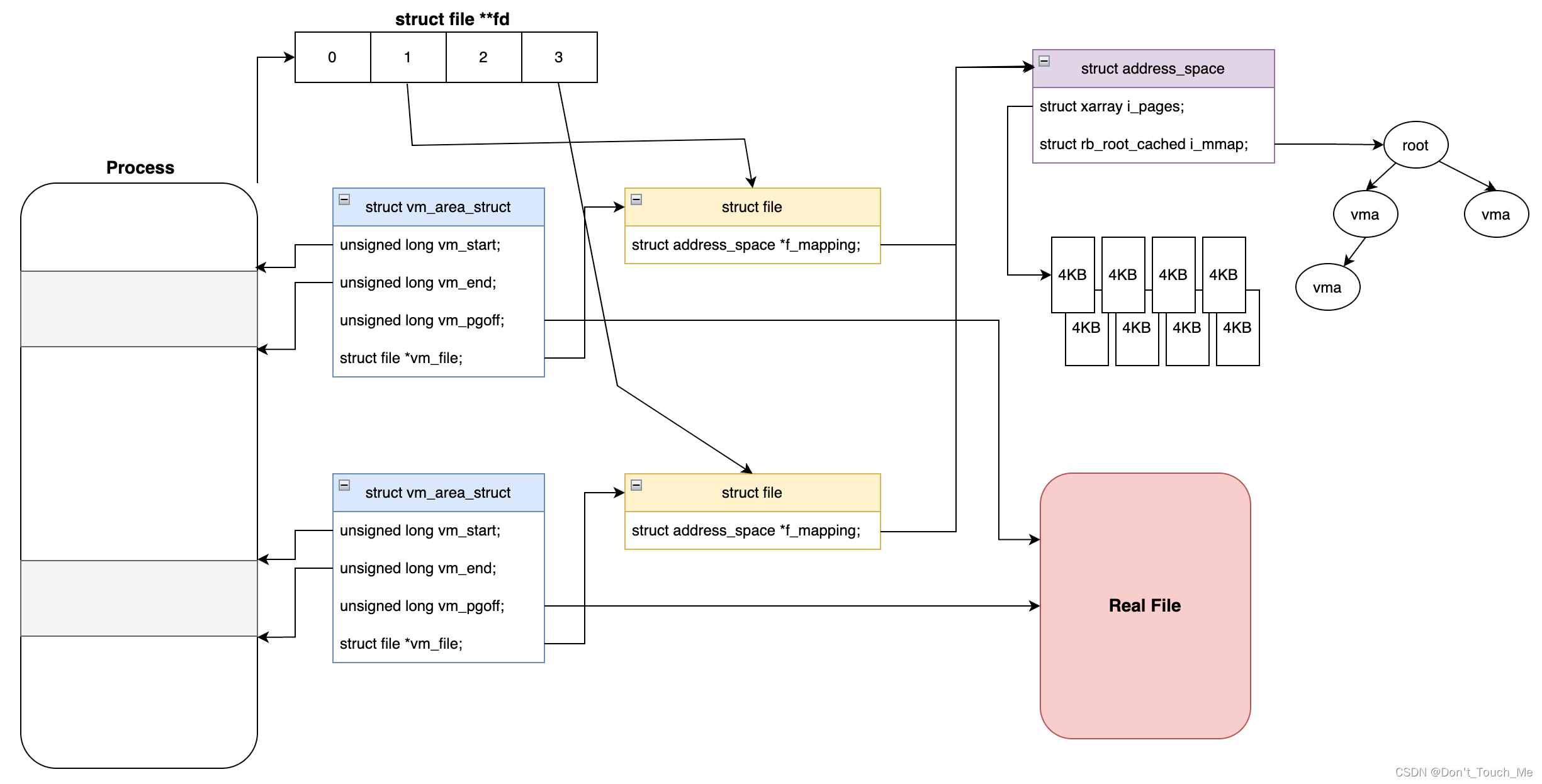
3. 建立文件反向映射流程
我们都是通过一个path去打开一个文件,然后再通过mmap()去将文件映射到进程的虚拟地址空间,后续通过访存这块虚拟地址空间来达到读写文件的目的。
int fd = open("/path/to/your/file", O_RDWR | O_CREAT, S_IRUSR | S_IWUSR);
void *ptr = mmap(NULL, size, PROT_READ | PROT_WRITE, MAP_SHARED, fd, 0);
// do something
munmap(ptr, size);
close(fd);
现在让我们从mmap()映射文件描述符这里看起。
arm64体系结构下,且内核是linux-5.10版本:
SYSCALL_DEFINE6(mmap, unsigned long, addr, unsigned long, len,
unsigned long, prot, unsigned long, flags,
unsigned long, fd, unsigned long, off)
{
if (offset_in_page(off) != 0)
return -EINVAL;
return ksys_mmap_pgoff(addr, len, prot, flags, fd, off >> PAGE_SHIFT);
}
unsigned long ksys_mmap_pgoff(unsigned long addr, unsigned long len,
unsigned long prot, unsigned long flags,
unsigned long fd, unsigned long pgoff)
{
struct file *file = NULL;
unsigned long retval;
if (!(flags & MAP_ANONYMOUS)) { // 由于我们传递的flags是不包含MAP_ANONYMOUS,所以会走到这个分支里
audit_mmap_fd(fd, flags);
file = fget(fd); // 根据fd获取struct file对象,并增加引用计数
if (!file) // 如果该fd没有对应的struct file对象,则返回-EBADF错误
return -EBADF;
if (is_file_hugepages(file)) {
len = ALIGN(len, huge_page_size(hstate_file(file)));
} else if (unlikely(flags & MAP_HUGETLB)) {
retval = -EINVAL;
goto out_fput;
}
} else if (flags & MAP_HUGETLB) {
struct user_struct *user = NULL;
struct hstate *hs;
hs = hstate_sizelog((flags >> MAP_HUGE_SHIFT) & MAP_HUGE_MASK);
if (!hs)
return -EINVAL;
len = ALIGN(len, huge_page_size(hs));
/*
* VM_NORESERVE is used because the reservations will be
* taken when vm_ops->mmap() is called
* A dummy user value is used because we are not locking
* memory so no accounting is necessary
*/
file = hugetlb_file_setup(HUGETLB_ANON_FILE, len,
VM_NORESERVE,
&user, HUGETLB_ANONHUGE_INODE,
(flags >> MAP_HUGE_SHIFT) & MAP_HUGE_MASK);
if (IS_ERR(file))
return PTR_ERR(file);
}
flags &= ~(MAP_EXECUTABLE | MAP_DENYWRITE);
// 进入到vm_mmap_pgoff处理
retval = vm_mmap_pgoff(file, addr, len, prot, flags, pgoff);
out_fput:
if (file)
fput(file);
return retval;
}
unsigned long vm_mmap_pgoff(struct file *file, unsigned long addr,
unsigned long len, unsigned long prot,
unsigned long flag, unsigned long pgoff)
{
unsigned long ret;
struct mm_struct *mm = current->mm;
unsigned long populate;
LIST_HEAD(uf);
ret = security_mmap_file(file, prot, flag);
if (!ret) {
if (mmap_write_lock_killable(mm))
return -EINTR;
// 进入do_mmap处理
ret = do_mmap(file, addr, len, prot, flag, pgoff, &populate,
&uf);
mmap_write_unlock(mm);
userfaultfd_unmap_complete(mm, &uf);
if (populate)
mm_populate(ret, populate);
}
return ret;
}
接下来我们进入到映射主要处理函数do_mmap()。
/*
* The caller must write-lock current->mm->mmap_lock.
*/
unsigned long do_mmap(struct file *file, unsigned long addr,
unsigned long len, unsigned long prot,
unsigned long flags, unsigned long pgoff,
unsigned long *populate, struct list_head *uf)
{
struct mm_struct *mm = current->mm;
vm_flags_t vm_flags;
int pkey = 0;
*populate = 0;
if (!len) // 如果要映射的空间大小为0,则返回-EINVAL
return -EINVAL;
/*
* Does the application expect PROT_READ to imply PROT_EXEC?
*
* (the exception is when the underlying filesystem is noexec
* mounted, in which case we dont add PROT_EXEC.)
*/
if ((prot & PROT_READ) && (current->personality & READ_IMPLIES_EXEC))
if (!(file && path_noexec(&file->f_path)))
prot |= PROT_EXEC;
/* force arch specific MAP_FIXED handling in get_unmapped_area */
if (flags & MAP_FIXED_NOREPLACE)
flags |= MAP_FIXED;
if (!(flags & MAP_FIXED))
addr = round_hint_to_min(addr);
/* Careful about overflows.. */
len = PAGE_ALIGN(len); // 按页粒度对齐要映射的空间大小
if (!len)
return -ENOMEM;
/* offset overflow? */
if ((pgoff + (len >> PAGE_SHIFT)) < pgoff)
return -EOVERFLOW;
/* Too many mappings? */
if (mm->map_count > sysctl_max_map_count)
return -ENOMEM;
/* Obtain the address to map to. we verify (or select) it and ensure
* that it represents a valid section of the address space.
*/
addr = get_unmapped_area(file, addr, len, pgoff, flags); // 找到一块未映射的虚拟地址
if (IS_ERR_VALUE(addr))
return addr;
if (flags & MAP_FIXED_NOREPLACE) {
struct vm_area_struct *vma = find_vma(mm, addr);
if (vma && vma->vm_start < addr + len)
return -EEXIST;
}
if (prot == PROT_EXEC) {
pkey = execute_only_pkey(mm);
if (pkey < 0)
pkey = 0;
}
/* Do simple checking here so the lower-level routines won't have
* to. we assume access permissions have been handled by the open
* of the memory object, so we don't do any here.
*/
vm_flags = calc_vm_prot_bits(prot, pkey) | calc_vm_flag_bits(flags) |
mm->def_flags | VM_MAYREAD | VM_MAYWRITE | VM_MAYEXEC;
if (flags & MAP_LOCKED)
if (!can_do_mlock())
return -EPERM;
if (mlock_future_check(mm, vm_flags, len))
return -EAGAIN;
if (file) {
struct inode *inode = file_inode(file);
unsigned long flags_mask;
if (!file_mmap_ok(file, inode, pgoff, len))
return -EOVERFLOW;
flags_mask = LEGACY_MAP_MASK | file->f_op->mmap_supported_flags;
switch (flags & MAP_TYPE) {
case MAP_SHARED:
/*
* Force use of MAP_SHARED_VALIDATE with non-legacy
* flags. E.g. MAP_SYNC is dangerous to use with
* MAP_SHARED as you don't know which consistency model
* you will get. We silently ignore unsupported flags
* with MAP_SHARED to preserve backward compatibility.
*/
flags &= LEGACY_MAP_MASK;
fallthrough;
case MAP_SHARED_VALIDATE:
if (flags & ~flags_mask)
return -EOPNOTSUPP;
if (prot & PROT_WRITE) {
if (!(file->f_mode & FMODE_WRITE))
return -EACCES;
if (IS_SWAPFILE(file->f_mapping->host))
return -ETXTBSY;
}
/*
* Make sure we don't allow writing to an append-only
* file..
*/
if (IS_APPEND(inode) && (file->f_mode & FMODE_WRITE))
return -EACCES;
/*
* Make sure there are no mandatory locks on the file.
*/
if (locks_verify_locked(file))
return -EAGAIN;
vm_flags |= VM_SHARED | VM_MAYSHARE;
if (!(file->f_mode & FMODE_WRITE))
vm_flags &= ~(VM_MAYWRITE | VM_SHARED);
fallthrough;
case MAP_PRIVATE:
if (!(file->f_mode & FMODE_READ))
return -EACCES;
if (path_noexec(&file->f_path)) {
if (vm_flags & VM_EXEC)
return -EPERM;
vm_flags &= ~VM_MAYEXEC;
}
if (!file->f_op->mmap)
return -ENODEV;
if (vm_flags & (VM_GROWSDOWN|VM_GROWSUP))
return -EINVAL;
break;
default:
return -EINVAL;
}
} else {
switch (flags & MAP_TYPE) {
case MAP_SHARED:
if (vm_flags & (VM_GROWSDOWN|VM_GROWSUP))
return -EINVAL;
/*
* Ignore pgoff.
*/
pgoff = 0;
vm_flags |= VM_SHARED | VM_MAYSHARE;
break;
case MAP_PRIVATE:
/*
* Set pgoff according to addr for anon_vma.
*/
pgoff = addr >> PAGE_SHIFT;
break;
default:
return -EINVAL;
}
}
/*
* Set 'VM_NORESERVE' if we should not account for the
* memory use of this mapping.
*/
if (flags & MAP_NORESERVE) {
/* We honor MAP_NORESERVE if allowed to overcommit */
if (sysctl_overcommit_memory != OVERCOMMIT_NEVER)
vm_flags |= VM_NORESERVE;
/* hugetlb applies strict overcommit unless MAP_NORESERVE */
if (file && is_file_hugepages(file))
vm_flags |= VM_NORESERVE;
}
// 进入mmap_region进行下一步处理
addr = mmap_region(file, addr, len, vm_flags, pgoff, uf);
if (!IS_ERR_VALUE(addr) &&
((vm_flags & VM_LOCKED) ||
(flags & (MAP_POPULATE | MAP_NONBLOCK)) == MAP_POPULATE))
*populate = len;
return addr;
}
unsigned long mmap_region(struct file *file, unsigned long addr,
unsigned long len, vm_flags_t vm_flags, unsigned long pgoff,
struct list_head *uf)
{
struct mm_struct *mm = current->mm;
struct vm_area_struct *vma, *prev, *merge;
int error;
struct rb_node **rb_link, *rb_parent;
unsigned long charged = 0;
/* Check against address space limit. */
if (!may_expand_vm(mm, vm_flags, len >> PAGE_SHIFT)) {
unsigned long nr_pages;
/*
* MAP_FIXED may remove pages of mappings that intersects with
* requested mapping. Account for the pages it would unmap.
*/
nr_pages = count_vma_pages_range(mm, addr, addr + len);
if (!may_expand_vm(mm, vm_flags,
(len >> PAGE_SHIFT) - nr_pages))
return -ENOMEM;
}
/* Clear old maps, set up prev, rb_link, rb_parent, and uf */
if (munmap_vma_range(mm, addr, len, &prev, &rb_link, &rb_parent, uf))
return -ENOMEM;
/*
* Private writable mapping: check memory availability
*/
if (accountable_mapping(file, vm_flags)) {
charged = len >> PAGE_SHIFT;
if (security_vm_enough_memory_mm(mm, charged))
return -ENOMEM;
vm_flags |= VM_ACCOUNT;
}
/*
* Can we just expand an old mapping?
*/
vma = vma_merge(mm, prev, addr, addr + len, vm_flags,
NULL, file, pgoff, NULL, NULL_VM_UFFD_CTX);
if (vma)
goto out;
/*
* Determine the object being mapped and call the appropriate
* specific mapper. the address has already been validated, but
* not unmapped, but the maps are removed from the list.
*/
vma = vm_area_alloc(mm); // 分配一个新的vma管理结构对象
if (!vma) {
error = -ENOMEM;
goto unacct_error;
}
vma->vm_start = addr; // 填充vma信息,vma的起始虚拟地址是addr
vma->vm_end = addr + len; // vma的结束虚拟地址是addr + len
vma->vm_flags = vm_flags;
vma->vm_page_prot = vm_get_page_prot(vm_flags);
vma->vm_pgoff = pgoff; // vma的vm_pgoff保存的是相对于文件起始地址的偏移量,是以页为单位
if (file) {
if (vm_flags & VM_DENYWRITE) {
error = deny_write_access(file);
if (error)
goto free_vma;
}
if (vm_flags & VM_SHARED) {
error = mapping_map_writable(file->f_mapping);
if (error)
goto allow_write_and_free_vma;
}
/* ->mmap() can change vma->vm_file, but must guarantee that
* vma_link() below can deny write-access if VM_DENYWRITE is set
* and map writably if VM_SHARED is set. This usually means the
* new file must not have been exposed to user-space, yet.
*/
vma->vm_file = get_file(file); // 再次增加struct file对象引用计数
error = call_mmap(file, vma); // call_mmap()是为了填充vma->vm_ops,page fault时使用
if (error)
goto unmap_and_free_vma;
/* Can addr have changed??
*
* Answer: Yes, several device drivers can do it in their
* f_op->mmap method. -DaveM
* Bug: If addr is changed, prev, rb_link, rb_parent should
* be updated for vma_link()
*/
WARN_ON_ONCE(addr != vma->vm_start);
addr = vma->vm_start;
/* If vm_flags changed after call_mmap(), we should try merge vma again
* as we may succeed this time.
*/
if (unlikely(vm_flags != vma->vm_flags && prev)) {
merge = vma_merge(mm, prev, vma->vm_start, vma->vm_end, vma->vm_flags,
NULL, vma->vm_file, vma->vm_pgoff, NULL, NULL_VM_UFFD_CTX);
if (merge) {
/* ->mmap() can change vma->vm_file and fput the original file. So
* fput the vma->vm_file here or we would add an extra fput for file
* and cause general protection fault ultimately.
*/
fput(vma->vm_file);
vm_area_free(vma);
vma = merge;
/* Update vm_flags to pick up the change. */
vm_flags = vma->vm_flags;
goto unmap_writable;
}
}
vm_flags = vma->vm_flags;
} else if (vm_flags & VM_SHARED) {
error = shmem_zero_setup(vma);
if (error)
goto free_vma;
} else {
vma_set_anonymous(vma);
}
/* Allow architectures to sanity-check the vm_flags */
if (!arch_validate_flags(vma->vm_flags)) {
error = -EINVAL;
if (file)
goto unmap_and_free_vma;
else
goto free_vma;
}
// 建立页面映射
vma_link(mm, vma, prev, rb_link, rb_parent);
/* Once vma denies write, undo our temporary denial count */
if (file) {
unmap_writable:
if (vm_flags & VM_SHARED)
mapping_unmap_writable(file->f_mapping);
if (vm_flags & VM_DENYWRITE)
allow_write_access(file);
}
file = vma->vm_file;
out:
perf_event_mmap(vma);
vm_stat_account(mm, vm_flags, len >> PAGE_SHIFT);
if (vm_flags & VM_LOCKED) {
if ((vm_flags & VM_SPECIAL) || vma_is_dax(vma) ||
is_vm_hugetlb_page(vma) ||
vma == get_gate_vma(current->mm))
vma->vm_flags &= VM_LOCKED_CLEAR_MASK;
else
mm->locked_vm += (len >> PAGE_SHIFT);
}
if (file)
uprobe_mmap(vma);
/*
* New (or expanded) vma always get soft dirty status.
* Otherwise user-space soft-dirty page tracker won't
* be able to distinguish situation when vma area unmapped,
* then new mapped in-place (which must be aimed as
* a completely new data area).
*/
vma->vm_flags |= VM_SOFTDIRTY;
vma_set_page_prot(vma);
return addr;
unmap_and_free_vma:
vma->vm_file = NULL;
fput(file);
/* Undo any partial mapping done by a device driver. */
unmap_region(mm, vma, prev, vma->vm_start, vma->vm_end);
charged = 0;
if (vm_flags & VM_SHARED)
mapping_unmap_writable(file->f_mapping);
allow_write_and_free_vma:
if (vm_flags & VM_DENYWRITE)
allow_write_access(file);
free_vma:
vm_area_free(vma);
unacct_error:
if (charged)
vm_unacct_memory(charged);
return error;
}
这里终于到了给文件页建立反向映射,主要处理函数是vma_link()。
static void vma_link(struct mm_struct *mm, struct vm_area_struct *vma,
struct vm_area_struct *prev, struct rb_node **rb_link,
struct rb_node *rb_parent)
{
struct address_space *mapping = NULL;
if (vma->vm_file) {
mapping = vma->vm_file->f_mapping;
i_mmap_lock_write(mapping);
}
// 将vma加到mm->mm_rb红黑树中,另外也加到mm->mmap vma链表中
__vma_link(mm, vma, prev, rb_link, rb_parent);
// 建立文件页反向映射
__vma_link_file(vma);
if (mapping)
i_mmap_unlock_write(mapping);
mm->map_count++;
validate_mm(mm);
}
static void __vma_link_file(struct vm_area_struct *vma)
{
struct file *file;
file = vma->vm_file;
if (file) {
// 获取文件的address_space
struct address_space *mapping = file->f_mapping;
if (vma->vm_flags & VM_DENYWRITE)
put_write_access(file_inode(file));
if (vma->vm_flags & VM_SHARED)
mapping_allow_writable(mapping);
flush_dcache_mmap_lock(mapping);
// 将vma加入到address_space->i_mmap红黑树中
vma_interval_tree_insert(vma, &mapping->i_mmap);
flush_dcache_mmap_unlock(mapping);
}
}
4. 回收文件页时使用反向映射
这里以kswapd进行文件页回收为例,与直接回收的路径下半部分是重合的(从shrink_node()函数开始)
kswapd()
-> balance_pgdat()
--> kswapd_shrink_node()
---> shrink_node()
----> shrink_node_memcgs()
-----> shrink_lruvec()
------> shrink_list()
-------> shrink_inactive_list()
--------> shrink_page_list()
---------> try_to_unmap()
在回收文件页的时候,需要使用到反向映射,所以我们来看一下**try_to_unmap()**对于文件页都做了哪些操作,
/**
* try_to_unmap - try to remove all page table mappings to a page
* @page: the page to get unmapped
* @flags: action and flags
*
* Tries to remove all the page table entries which are mapping this
* page, used in the pageout path. Caller must hold the page lock.
*
* If unmap is successful, return true. Otherwise, false.
*/
bool try_to_unmap(struct page *page, enum ttu_flags flags)
{
struct rmap_walk_control rwc = {
.rmap_one = try_to_unmap_one,
.arg = (void *)flags,
.done = page_mapcount_is_zero,
.anon_lock = page_lock_anon_vma_read,
};
/*
* During exec, a temporary VMA is setup and later moved.
* The VMA is moved under the anon_vma lock but not the
* page tables leading to a race where migration cannot
* find the migration ptes. Rather than increasing the
* locking requirements of exec(), migration skips
* temporary VMAs until after exec() completes.
*/
if ((flags & (TTU_MIGRATION|TTU_SPLIT_FREEZE))
&& !PageKsm(page) && PageAnon(page))
rwc.invalid_vma = invalid_migration_vma;
if (flags & TTU_RMAP_LOCKED)
rmap_walk_locked(page, &rwc);
else
// 文件页走这里
rmap_walk(page, &rwc);
return !page_mapcount(page) ? true : false;
}
void rmap_walk(struct page *page, struct rmap_walk_control *rwc)
{
if (unlikely(PageKsm(page)))
rmap_walk_ksm(page, rwc);
else if (PageAnon(page))
rmap_walk_anon(page, rwc, false);
else
// 文件页走这里
rmap_walk_file(page, rwc, false);
}
/*
* rmap_walk_file - do something to file page using the object-based rmap method
* @page: the page to be handled
* @rwc: control variable according to each walk type
*
* Find all the mappings of a page using the mapping pointer and the vma chains
* contained in the address_space struct it points to.
*
* When called from try_to_munlock(), the mmap_lock of the mm containing the vma
* where the page was found will be held for write. So, we won't recheck
* vm_flags for that VMA. That should be OK, because that vma shouldn't be
* LOCKED.
*/
static void rmap_walk_file(struct page *page, struct rmap_walk_control *rwc,
bool locked)
{
struct address_space *mapping = page_mapping(page); // 获取到该page对应的映射
pgoff_t pgoff_start, pgoff_end;
struct vm_area_struct *vma;
/*
* The page lock not only makes sure that page->mapping cannot
* suddenly be NULLified by truncation, it makes sure that the
* structure at mapping cannot be freed and reused yet,
* so we can safely take mapping->i_mmap_rwsem.
*/
VM_BUG_ON_PAGE(!PageLocked(page), page);
if (!mapping)
return;
pgoff_start = page_to_pgoff(page); // 这点忘记介绍了,可以通过page找到该page是映射到文件的哪个位置,便于找到该page在哪个vma中有映射
pgoff_end = pgoff_start + thp_nr_pages(page) - 1;
if (!locked)
i_mmap_lock_read(mapping);
vma_interval_tree_foreach(vma, &mapping->i_mmap, // 从address_space->i_mmap红黑树中查找映射了该page到vma
pgoff_start, pgoff_end) {
unsigned long address = vma_address(page, vma);
cond_resched();
if (rwc->invalid_vma && rwc->invalid_vma(vma, rwc->arg))
continue;
if (!rwc->rmap_one(page, vma, address, rwc->arg))
goto done;
if (rwc->done && rwc->done(page))
goto done;
}
done:
if (!locked)
i_mmap_unlock_read(mapping);
}
至此文件页的反向映射处理和使用流程介绍完毕,感谢各位读者浏览!
